Explore the richness of India’s culture and diverse landscapes through an extensive list of Indian fruits.
From the snowy peaks of the Himalayas to the sun-kissed shores of the Indian Ocean, the subcontinent boasts an astounding variety of fruits, each reflecting its region’s unique geography, climate, and culture.
Discover a comprehensive guide to the tantalizing world of the list of Indian fruits, highlighting their flavours, textures, and nutritional benefits.
Embark on a journey through orchards and groves, where lush mango trees sway in the tropical breeze, offering succulent delights like the Alphonso, Dussehri, and Langra.
Discover the tangy sweetness of Jamun, also known as Indian blackberry, found abundantly across the country.
Traverse the serene backwaters of Kerala to savour the refreshing taste of tender coconut water, a beloved thirst-quencher and natural electrolyte.
Venture into the heartland of India to encounter the humble yet nutritious custard apple, or ‘Sitaphal,’ with its creamy flesh and subtle hints of sweetness.
Explore the enchanting hills of the Western Ghats to unearth the exotic treasures of jackfruit, bursting with tropical flavours and versatile culinary possibilities.
Each fruit embodies the essence of India’s culinary heritage, from tamarind’s tartness to guava’s floral notes.
List of Indian Fruits
Explore the rich variety of list of Indian fruits, each offering unique flavours, textures, and nutritional benefits.
1. Mango

Mango is known as the king of fruits in India.
It is loved for its sweet and juicy flesh, vibrant colour, and rich flavour.
Mangoes come in various varieties, each with its unique taste and texture.
They are commonly eaten fresh and used in desserts, juices, chutneys, and pickles.
2. Apple

Apples are widely cultivated in many parts of India and are enjoyed for their crisp texture and sweet-tart flavour.
They come in different colours and varieties, such as red, green, and yellow.
Apples are packed with nutrients like vitamins and fibre, making them a healthy snack option.
3. Blackberry

Small, dark purple fruits grow in thorny bushes.
They have a sweet/slightly tart flavour and are often used in desserts, jams, and jellies.
Adding blackberries to your diet can be wise as they contain crucial vitamins and minerals.
These juicy delights are not only delicious but also a healthy snack option.
Take advantage of this opportunity to boost your nutrition.
Start incorporating blackberries into your daily routine today!
4. Orange

Oranges are citrus fruits known for their bright colour, refreshing taste, and juiciness.
They are rich in vitamin C, boosting the immune system and improving skin.
Oranges are commonly eaten fresh or juiced but can also be used in salads, desserts, and savoury dishes.
5. Jackfruit

It is a tropical fruit that is widely cultivated in India.
It is known for its large size and sweet, aromatic flavour.
The fruit’s flesh is rich in nutrients, including vitamins and minerals, making it an ingredient in various dishes and desserts.
6. Banana

It is one of the most commonly consumed fruits in India.
It is prized for its natural sweetness, creamy texture, and nutritional benefits.
Bananas are a great source of fibre and vitamin C, making them a convenient snack option for people of all groups.
7. Red banana

Also known as Lal Kela in India, it is a variety of banana with a reddish-purple skin and sweet, creamy flesh.
It is similar in taste and texture to regular bananas but has a slightly different flavour profile and nutritional content.
8. Cranberry

It is a small, tart fruit that is native to North America but is also grown in some parts of India.
It is often used in cooking and baking to add flavour and acidity.
Cranberries are also known for their health benefits, as they are rich in antioxidants and have been associated with urinary tract health.
These Indian fruits offer consumers various flavours, textures, and nutritional benefits.
9. Figs

Are sweet and delicious fruits grown on the fig tree, native to Western Asia and cultivated in India.
They have a unique texture and are often eaten fresh or dried.
10. Grapes

Grapes are juicy and flavorful fruits that grow in vine clusters.
They come in various colours, including green, red, and purple, and are commonly used to make wine, juices, and jams in India.
11. Gooseberry

Gooseberries, also known as amla, are small, round fruits rich in vitamin C and antioxidants.
They have a tangy and slightly sour taste and are often used in Indian cuisine to make pickles, chutneys, and preserves.
12. Pineapple

Pineapples are tropical fruits with a sweet and tangy flavour.
They grow on the pineapple plant, characterised by their spiky exterior and juicy yellow flesh.
Pineapples are commonly eaten fresh or used in desserts, salads, and savoury dishes in India.
13. Lychee

Lychee is a tropical fruit known for its sweet and juicy flesh.
It has a rough, reddish-brown outer skin peeled away to reveal the translucent white fruit inside.
Lychees are a healthy and refreshing snack due to their high vitamin C and antioxidant content.
14. Blueberry

Blueberries are small, round fruits packed with flavour and nutrients.
They taste sweet and tart and are often used in desserts, smoothies, and baked goods.
Blueberries are high in antioxidants and vitamins, making them beneficial for heart health and immune function.
15. Coconut

Is a versatile fruit widely used in Indian cuisine.
It has a hard outer shell, soft white flesh, and sweet coconut water.
Coconut is rich in healthy fats and fibre, making it a nutritious addition to curries, chutneys, and desserts.
16. Pear

Pears are sweet and juicy fruits in various colours and flavours.
They have a distinctive pear shape and smooth skin that ranges from green to yellow to red.
Pears are a great source of dietary food and vitamin C, which is crucial for maintaining good health.
Incorporating pears into your diet can help you meet your daily nutritional requirements.
They can be enjoyed as snacks or used to add nutrition to dishes like salads and desserts.
17. Prickly Pear

Prickly pear, also known as “Nagfani” in Hindi, is a cactus fruit commonly found in India.
It is known for its sweet and refreshing taste and is often eaten fresh or used to make juices, jams, and desserts.
18. Honey Pomelo/Grapefruit

Honey pomelo, also known as “Chakotra” in Hindi, is a large citrus Fruit with a sweet and tangy taste, similar to grapefruit but less bitter and more flavorful.
Also, In India, honey pomelo is enjoyed as a fruit or used in salads and desserts.
19. Watermelon

Watermelon, known as “Tarbooz” in Hindi, is a popular fruit in India, especially during the summer months.
It has a juicy and sweet flesh that is typically eaten fresh as a refreshing snack or used in fruit salads and juices.
20. Walnut

While not native to India, walnuts are widely cultivated in northern regions.
However, Walnuts, known as “Akhrot” in Hindi, are known for their rich flavour and crunchy texture.
They are often eaten as a snack, used in baking, or added to salads and savoury dishes for added flavour and nutrition.
21. Water Chestnut

Water chestnuts are aquatic plants that produce edible tubers.
They are found in freshwater lakes/ponds and are harvested for their crunchy texture and sweet flavour.
Water chestnuts are often used in Indian cuisine, particularly stir-fries, curries, and desserts.
22. Dates

Dates are sweet, chewy fruits that grow on date palm trees.
However, They are widely cultivated in India, particularly in states like Rajasthan, Gujarat, and Maharashtra.
Dates are rich in nutrients like vitamins, minerals, and fibre, making them a healthy option.
They are also used in various Indian sweets and desserts, adding natural sweetness and flavour.
23. Muskmelon

Muskmelon, also known as cantaloupe, is a popular fruit in India known for its sweet and fantastic taste.
It has a juicy orange and a distinct aroma. Muskmelons are commonly consumed fresh as a snack or used in fruit salads and desserts.
24. Lemon

Lemons are citrus fruits widely used in Indian cuisine for their tangy flavour and aromatic zest.
They are rich in vitamin C and are known for their health benefits.
Moreover, Lemons are used in various Indian dishes, including curries, chutneys, and drinks like lemonade and nimbu pani.
They are also used as a natural preservative and flavour enhancer in pickles and marinades.
25. Mahua

Mahua, also known as Madhuca longifolia, is a tropical tree in the Indian subcontinent.
Its small, round fruits are rich in nutrients and taste sweet.
Mahua fruits are often used to make traditional beverages and snacks, and the tree is also valued for its medicinal properties.
26. Sweet Orange

Sweet orange, scientifically known as Citrus sinensis, is a popular citrus fruit cultivated in many parts of India.
It has a juicy and sweet flavour, making it a favourite snack and ingredient in various dishes and desserts.
Sweet oranges are rich in vitamin C and other antioxidants, offering numerous health benefits.
27. Guava

Guava, or Psidium guajava, is a tropical fruit native to South America but widely cultivated in India.
However, It has a unique flavour combining sweet and tangy, and the fruit is prized for its high vitamin C content.
Guavas are often eaten fresh or used to make juices, jams, and desserts.
28. Custard Apple

Custard apple, also known as Sitaphal or Annona squamosa, is a tropical fruit with a sweet and creamy texture.
It has a fantastic flavour reminiscent of vanilla and pineapple, and the fruit is enjoyed fresh or used in smoothies, ice creams, and custards.
Custard apples are also rich in vitamins and minerals, making them a nutrition to the diet.
29. Tamarind

Tamarind is a tropical fruit that grows on the tamarind tree. It is native to Africa but also cultivated in India.
It has a tangy-sweet flavour and is commonly used in Indian cuisine to add a sour taste to dishes like curries, chutneys, and sauces.
Tamarind is also used to make refreshing drinks and candies.
30. Indian Jujube

Indian jujube, also known as ber or bor, is a small, sweet fruit that grows on the ber tree.
It is native to the Indian subcontinent and is famous for its juicy flavour.
Indian jujube is often eaten fresh as a snack or used in desserts, jams, and pickles.
31. Naseberry

Naseberry, also known as sapodilla, is a tropical fruit native to Mexico and grown in India.
However, It has a sweet and grainy texture, similar to a pear or apple.
Naseberry is commonly eaten fresh or used in desserts, smoothies, and ice creams.
32. Kiwi

Chinese gooseberry is a small, fuzzy fruit with a tangy-sweet flavour.
It is native to China but also cultivated in India.
Kiwi is a nutritious addition to salads, smoothies, and desserts, rich in vitamin C and fibre.
33. Sweet Potato

Sweet potato is a starchy root vegetable grown in many parts of India.
It is known for its sweet taste and bright orange flesh.
Sweet potatoes are a source of fibre, making them a nutritious meal ingredient.
34. Mimusops
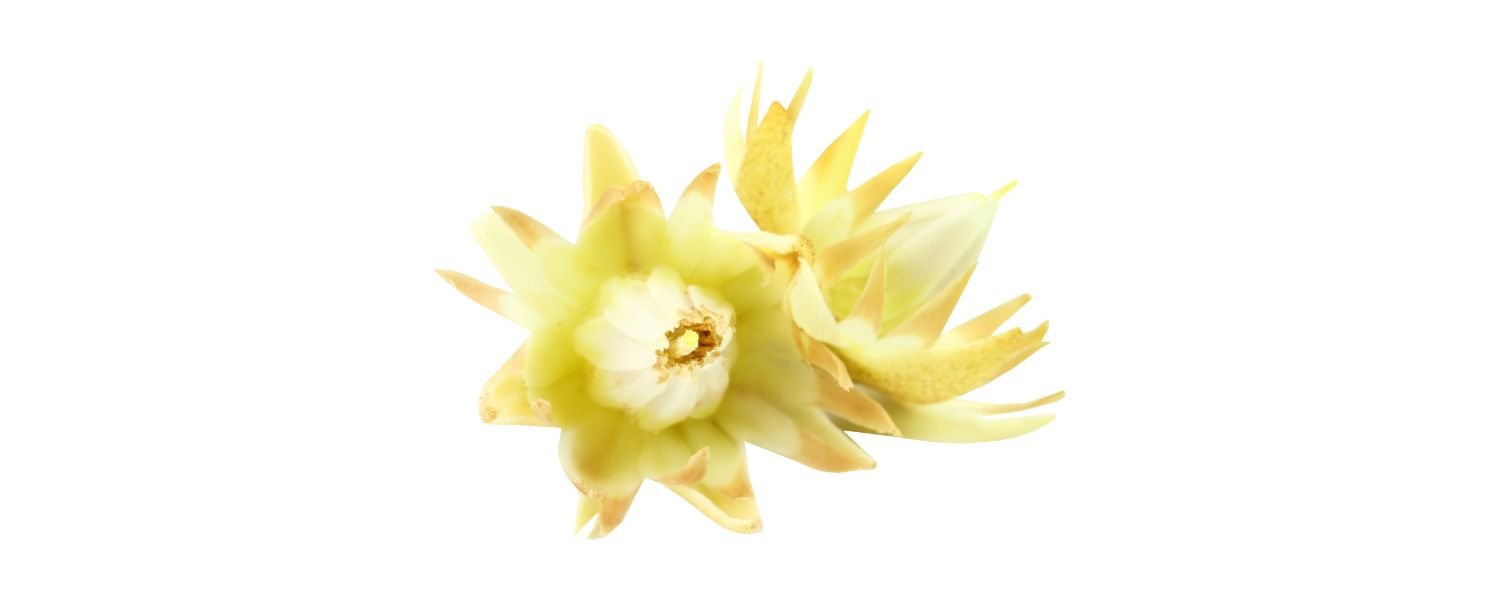
Mimusops, also known as Indian medlar or bullet wood, is a tropical tree native to India.
However, Its fruit is small, round, and yellowish-orange when ripe.
The fruit is sweet, slightly tangy, and often eaten fresh in desserts and jams.
35. Sugarcane

Sugarcane is a tall perennial grass cultivated for its sweet juice.
In India, sugarcane is primarily grown for sugar production, but the juice is also consumed fresh or used to make traditional beverages like sugarcane juice and jaggery.
36. Chestnut

Chestnut trees are not native to India but are grown in some parts of the country.
Also, The chestnut fruit is enclosed in a spiky, prickly husk and contains one or more edible nuts.
Chestnuts can be roasted, boiled, or used in various dishes and desserts.
37. Carambola

Carambola, also known as star fruit, is a tropical fruit in Southeast Asia but widely cultivated in India.
However, It has a distinctive star-shaped appearance when sliced crosswise, hence its name.
Carambola has a tangy flavour and can be eaten fresh in salads, juices, and desserts.
38. Sycamore/Cluster Fig

Sycamore, also known as cluster fig or Gular, is a fruit tree native to India.
Moreover, It produces small, round figs that grow in clusters, hence the name “cluster fig.”
The fruit tastes sweet and is often eaten fresh or used in jams, preserves, and chutneys.
39. Wood Apple
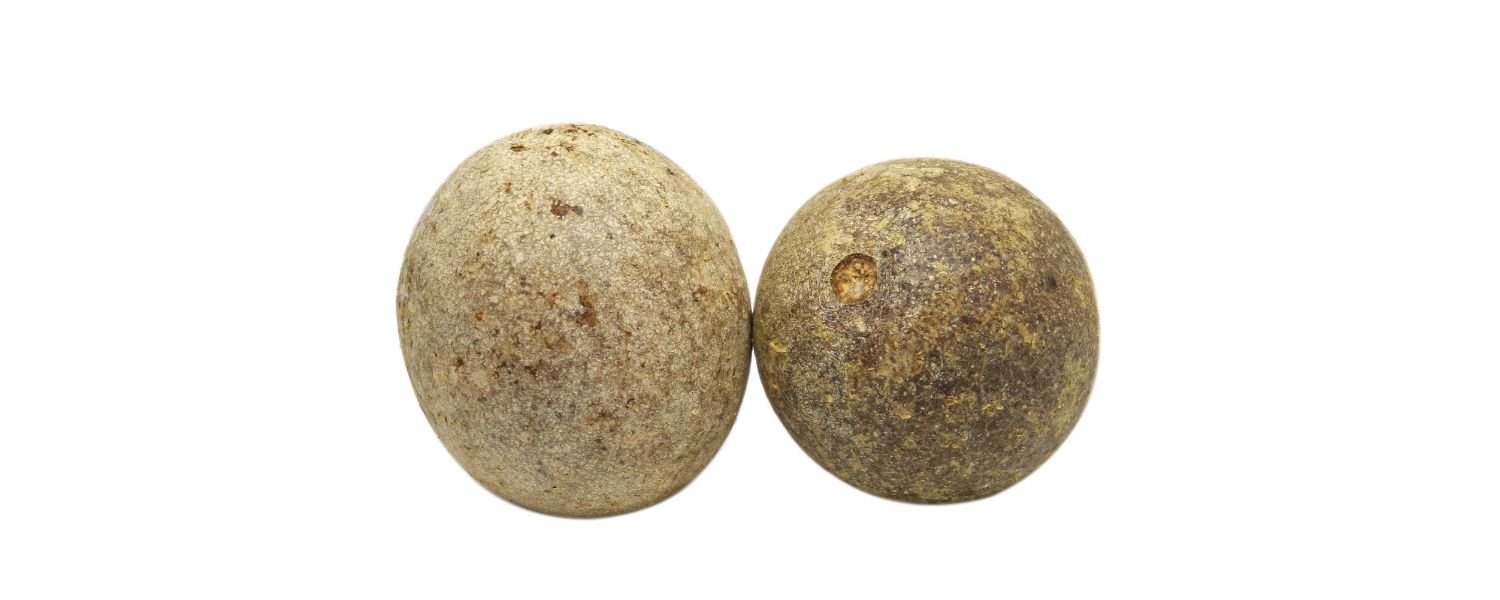
Wood apple, also known as Bael fruit, is a tropical fruit in India.
However, It has a hard outer shell and soft, aromatic pulp inside.
Wood apples are highly nutritious and are often consumed fresh or used to make juices, sherbets, and traditional Indian sweets.
40. Makoi

Makoi, also known as Solanum nigrum or black nightshade, is a berry-bearing plant native to India.
The fruit is small and round, turning green to black when ripe.
However, Makoi berries are edible and have a slightly sweet and tangy flavour.
So, They are often used in traditional Indian cooking, especially chutneys, sauces, and pickles.
41. Peaches

They are typically eaten as a snack or used in desserts such as pies, cobblers, and preserves.
In India, peaches are grown in regions with temperate climates, such as Himachal Pradesh and Jammu and Kashmir.
42. Cucumber

Cucumbers are crisp, refreshing fruits that belong to the gourd family.
They have a high water content and a mild, refreshing flavour.
However, Cucumbers are often eaten in salads, sandwiches, and wraps.
They are also used in pickling and as a garnish for various dishes.
Also, Cucumbers are widely cultivated throughout India and are available year-round in most regions.
43. Black Catechu

Black catechu, also known as Khadir or Kattha, is a type of extract derived from the Acacia catechu tree.
It is used in traditional Indian medicine for its astringent and anti-inflammatory properties.
Black catechu is also used to prepare paan, a popular Indian digestive aid made from betel leaves, areca nuts, and various flavourings.
44. Mulberry
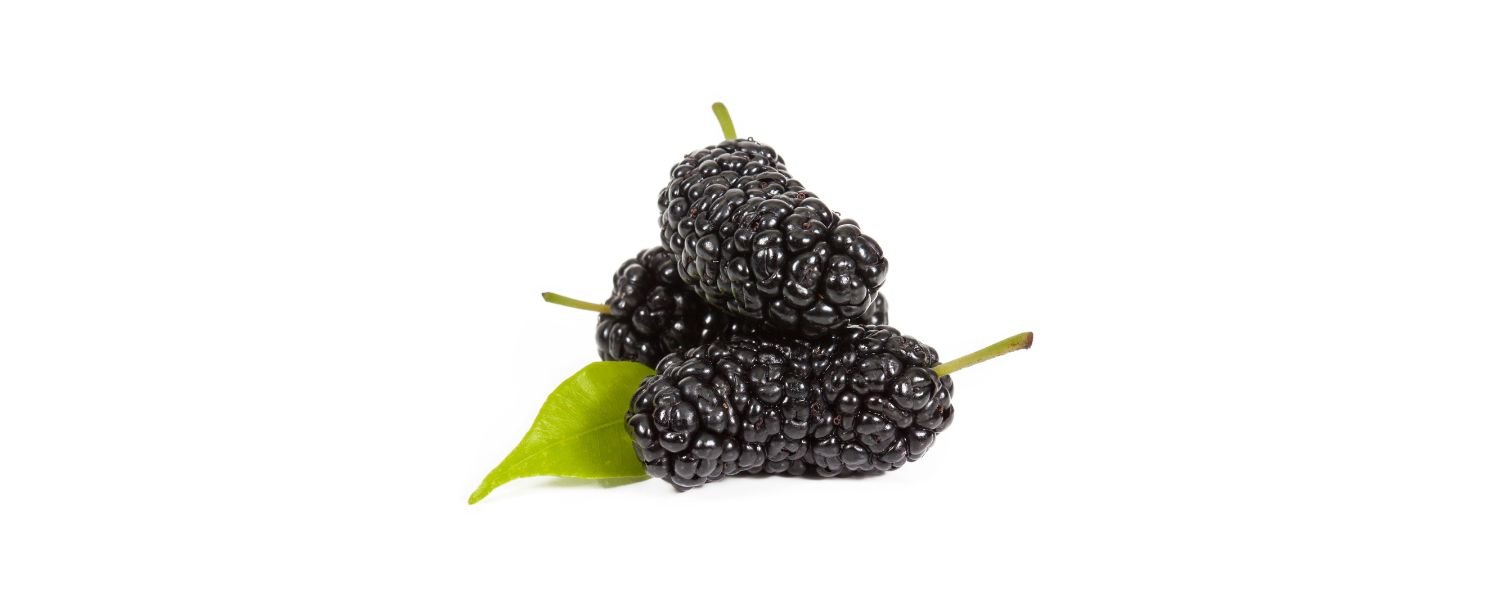
Mulberries are small, sweet-tart fruits that grow on deciduous trees.
They come in various colours, including black, red, and white, and are rich in vitamins and minerals.
Mulberries are commonly eaten fresh or used in desserts such as pies, tarts, and jams.
In India, mulberries are grown in regions with a subtropical climate, such as Punjab, Uttar Pradesh, and Gujarat.
45. Raisins
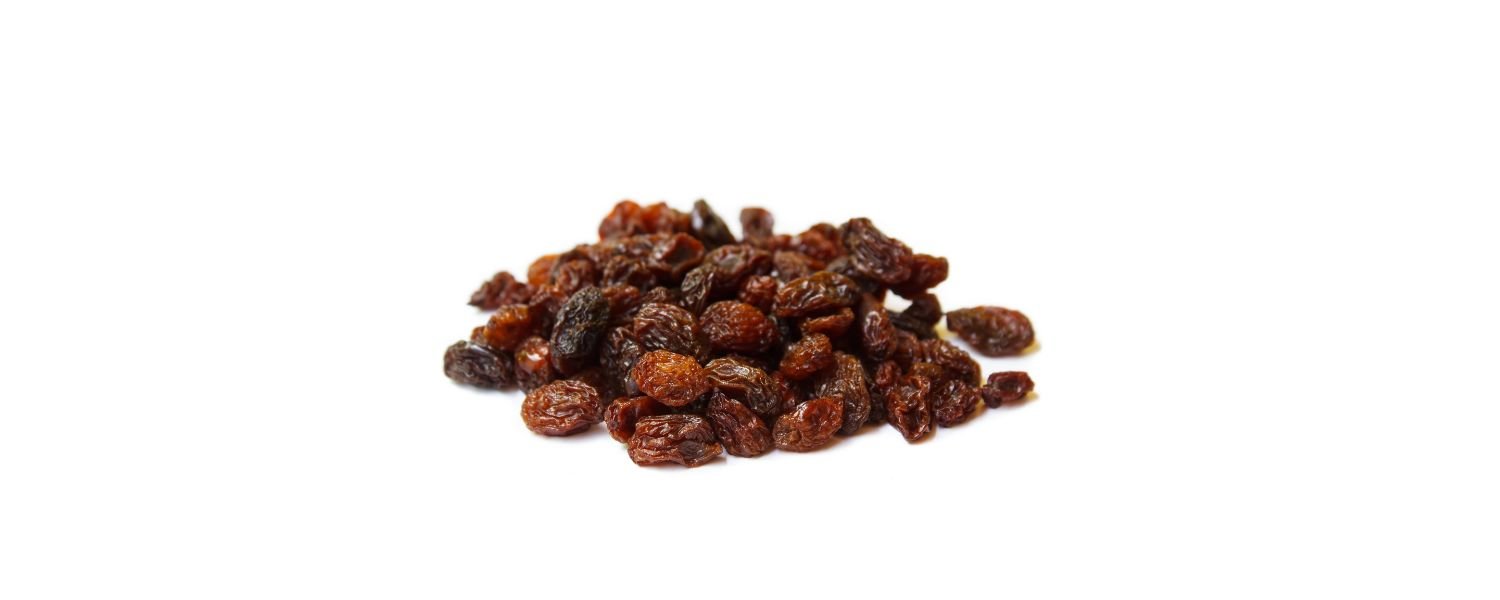
Are dried grapes that are packed with natural sweetness and are commonly used in cooking, baking, and snacking.
They are a good source of fibre and vitamins, making them healthy for your diet.
46. Papaya

It is a tropical fruit with a sweet and juicy flavour.
It is rich in vitamins C and A and other antioxidants, which benefit your immune system and overall health.
Papaya is also known for its digestive enzymes, which can help improve digestion and digestive issues.
47. Strawberry

It is a small, red fruit with a sweet and tangy taste.
Also, It is packed with vitamin C, making it a nutritious snack.
Strawberries are versatile and can be eaten fresh, added to salads, or made for desserts like pies, jams, and smoothies.
However, They are also low in calories, making them a guilt-free treat for anyone watching their weight.
Overall, these fruits offer a delicious and nutritious addition to any diet.
48. Black Currant

Black currant is a small, dark purple fruit that grows on shrubs in Europe and Asia.
It is known for its tart flavour and rich nutritional content, particularly its high vitamin C and antioxidant levels.
Moreover, Black currants often make jams, jellies, syrups, and juices.
Also, In Indian cuisine, black currants are not as commonly consumed as other fruits, but they can still be found in some speciality stores and used in various culinary applications.
49. Apricot

Apricot is a small, round fruit with smooth skin ranging from yellow to orange.
It has a sweet, slight flavour and soft and juicy texture.
However, Apricots are a good source of nutrients and are rich in vitamin A/C and dietary fibre.
In India, apricots are grown in the northern regions, particularly in the states of Jammu and Kashmir.
Also, They are enjoyed as a snack or used in cooking and baking, often in jams, chutneys, and desserts.
50. Pistachio

Pistachio is a tree nut native to Central Asia and the Middle East.
It has a green colour and a sweet and nutty flavour.
Also, Pistachios are rich in protein, healthy fats, and various vitamins and minerals, making them nutritious snacks.
In India, pistachios are primarily grown in the western state of Gujarat.
However, They are often eaten roasted and salted as a snack or used as an ingredient in sweets, desserts, and savoury dishes.
Pistachios are also used to make a variety of traditional Indian sweets, such as barfi and halwa.
51. Dragon Fruit

Dragon fruit, also called pitaya, which grows on the Hylocereus cactus plant, is a tropical fruit.
It has a unique appearance, with pink or yellow skin and red flesh, and is dotted with tiny black seeds.
Dragon fruit is prized for its sweet and refreshing taste, similar to a combination of kiwi and pear.
It is rich in vitamins and minerals, making it nutritious for your diet.
52. Star Fruit

Star fruit, also known as carambola, is a tropical fruit in Southeast Asia but commonly grown in India.
Also, It gets its name from its distinctive star shape. Star fruit has a sweet and good taste with a texture similar to grapes.
So, It is a healthy snack rich in vitamin C and fibre, making it delicious.
53. Pomegranate

Pomegranate is a popular fruit in India known for its juicy arils enclosed in a thick, leathery skin.
The arils are filled with sweet and tart juice and are rich in antioxidants, vitamins, and minerals.
However, Pomegranate is often eaten fresh or used to make juice, jams, and sauces.
So, It is also a symbol of fertility and prosperity in Indian culture.
54. Palm Fruit

Palm fruit refers to the edible fruit produced by various species of palm trees, including the date palm and coconut palm.
In India, palm fruit is commonly consumed in the form of dates, which are sweet and sticky with a chewy texture.
Dates are a source of energy, fibre, and nutrients, making them a popular food and ingredient in Indian cuisine.
Additionally, palm fruit is used to produce palm oil, widely used in cooking and as a base for various cosmetic and industrial products.
55. Rose Apple / Bell fruit

Rose apple, also known as bell fruit or Jambu, is a tropical fruit from Southeast Asia and cultivated in India.
It has a crisp texture and a sweet flavour, similar to an apple’s.
The fruit is typically eaten fresh in salads, desserts, and beverages.
In India, the rose apple is enjoyed for its refreshing taste and is often consumed during summer to cool off.
56. Root Vegetable

Root vegetables, essential in Indian cuisine, are widely consumed nationwide, including potatoes, carrots, radishes, and sweet potatoes.
These vegetables are valued for their versatility, nutritional value, and ability to thrive in various climates and soil conditions.
They are used in multiple dishes, from curries and stews to snacks and side dishes, and are prized for their earthy flavours and hearty textures.
57. Soursop

Soursop, also known as Graviola or Hanuman Phal in India, is a tropical fruit that is native to the Americas but is cultivated in India and other tropical regions around the world.
The fruit has a prickly green exterior and soft, white flesh with a tangy, slightly sweet flavour.
Soursop is often used to make juices, smoothies, and desserts in India and is valued for its refreshing taste and purported health benefits.
58. Avocado

Avocado, also known as butter fruit or Makhanphal in India, is a nutritious fruit that is native to Central America but is cultivated in India and other parts of the world.
Its creamy texture and mild nutty flavour make it a popular ingredient in salads, sandwiches, dips, and smoothies.
Avocado is prized for its high healthy fats, vitamins, and minerals content.
It is a superfood for its numerous health benefits, including heart, weight management, and skin health.
59. Barberry

Barberry is a small, tart fruit on the list of Indian fruits.
Its bright red colour and sour taste make it popular in Indian cuisine, especially for pickles and chutneys.
Also, Barberries are rich in vitamin C and antioxidants, offering various health benefits such as boosting immunity and promoting digestive health.
They are also used in traditional medicine for their anti-inflammatory and antimicrobial properties.
60. Monk Fruit

Monk fruit, also called “Luo han guo,” is a sweet fruit in Southern China and part of the list of Indian fruits.
So, It is prized for its intense sweetness, which comes from natural compounds called mogrosides in the fruit.
Monk fruit is often used as a sweetener instead of sugar, making it a popular choice for those taking to reduce their sugar intake.
In addition to its sweetening properties, monk fruit is also believed to have antioxidant and anti-inflammatory effects.
61. Cherry

Cherry is a popular fruit on the list of Indian fruits.
So, It comes in various colours, including red, yellow, and black, and has a sweet and tart flavour.
Cherries are rich in vitamins and minerals, making them beneficial for overall health.
However, They are often eaten fresh as a snack or dessert, jams, and sauces.
Cherries are also believed to have properties and may help decrease the risk of diseases.
62. Almond

Almond is a nutritious nut on the list of Indian fruits.
So, Despite being a nut, almonds are the seeds of the tree’s fruit.
They are healthy fats, protein, and vitamins, making them a nutritious addition to the diet.
However, Almonds are often eaten raw or roasted as a snack and are also used in various dishes like salads, desserts, and baked goods.
Almonds have numerous health benefits, including improving heart health, managing weight, and supporting brain function.
63. Mandarin

Mandarins, also known as tangerines or citrus reticulata, are small, sweet citrus fruits on the list of Indian fruits.
They are native to China but are widely cultivated in India and other tropical regions worldwide.
Also, Mandarins are prized for their juicy flesh, easy-to-peel skin, and refreshing flavour.
They come in various varieties, including clementines, satsumas, and tangerines, each with a unique taste and appearance.
However, Mandarins are rich in vitamin C, antioxidants, and fibre, making them a nutritious snack.
They are commonly eaten fresh or used in salads, desserts, and fruit juices.
In India, mandarins are enjoyed during the winter months when they are in season, adding a burst of colour and flavour to the local cuisine.
64. Monkey Fruit

Monkey fruit, also known as Ramphal or Annona reticulata, is a tropical fruit on the list of Indian fruits.
It is native to South Asia, including India, and is prized for its sweet, custard-like flesh and unique flavour.
Also, Monkey fruit is typically round or heart-shaped, with a greenish-yellow skin that turns brown when ripe.
The flesh is creamy white and contains black seeds that are not usually consumed.
However, Monkey fruit is rich in vitamins and minerals, making it a healthy addition to the diet.
It is commonly eaten fresh in desserts, smoothies, and fruit salads.
In India, monkey fruit is often enjoyed during the summer when it is in season, providing a refreshing and delicious treat on hot days.
65. Grewia Asiatica

Grewia asiatica, also known as phalsa or falsa, is a small, berry-like fruit that belongs to the list of Indian fruits.
It is native to South Asia, including India, and is prized for its tart flavour and refreshing taste.
Also, Grewia asiatica is typically round or oval-shaped, with a thin, purple-black skin and juicy, pinkish-white flesh.
The fruit has vitamins, minerals, and antioxidants, making it a nutritious snack.
However, Grewia asiatica is commonly eaten fresh or used in juices, jams, and syrups.
In India, phalsa is often enjoyed during the summer months when it is in season, providing a cooling and hydrating treat in the hot weather.
66. Jicama Fruit

Jicama fruit, also known as shankalu or Pachyrhizus erosus, is a root vegetable in the list of Indian fruits.
It is native to Mexico but is cultivated in India and other tropical regions worldwide.
Also, Jicama fruit is prized for its crisp, crunchy texture and mildly sweet flavour.
It is typically round or oval-shaped, with thin, brown skin and creamy white flesh.
However, Jicama fruit is rich in fibre, vitamins, and minerals, making it healthy and nutritious.
It can be eaten or cooked and is commonly used in salads, stir-fries, and Mexican dishes.
In India, jicama fruit is enjoyed year-round and is often included in street food snacks and traditional recipes.
67. Palmyra fruit

Palmyra fruit, also known as toddy palm or ice apple, is a tropical fruit native to India.
It is harvested from the Palmyra palm tree and is famous for its refreshing taste and jelly-like texture.
The fruit contains vitamins and minerals, making it a nutritious snack or dessert.
68. Ugli fruit

Ugli is a citrus hybrid cultivated in Jamaica and other tropical regions.
It is between grapefruit, orange, and tangerine, known for its bumpy, rough exterior and sweet, tangy flavour.
However, Ugli fruit is rich in vitamin C, making it a healthy addition to any diet.
69. Crab apple
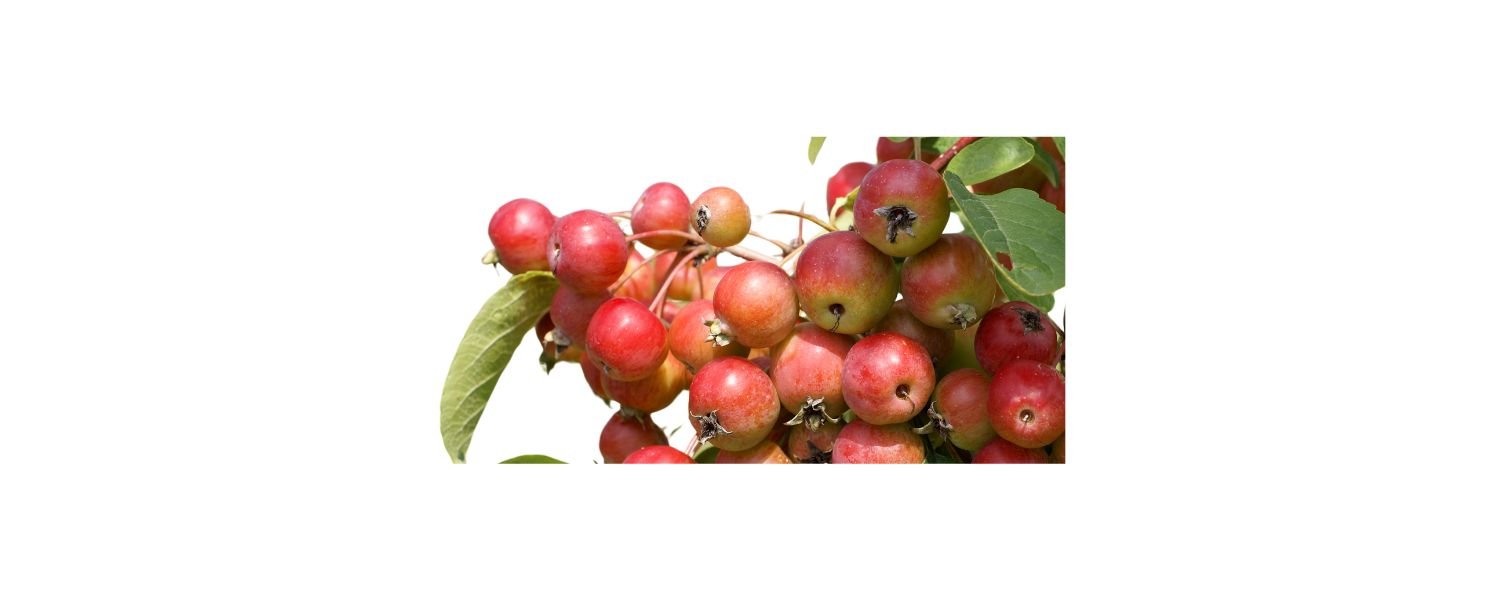
A crab apple is a small, tart fruit that resembles a miniature apple.
It is commonly found in temperate regions of India and is often used in cooking and baking due to its sour flavour.
Crab apples can be eaten or cooked and are often used to make jams, jellies, and sauces.
70. Tamarillo

Tamarillo, also known as tree tomato, is a tropical fruit native to South America and grown in India.
It has an egg-shaped appearance and comes in various colours, including red, orange, and yellow.
However, Tamarillo is tangy and often eaten raw or used in salads, salsas, and desserts.
71. Star Apple 
Also known as “Cainito,” the star apple is a tropical fruit in the Caribbean.
It has a distinctive purple or green skin and a sweet, milky pulp.
The fruit gets its name from the star-shaped pattern formed by the seeds when sliced horizontally.
72. Surinam Cherry

The Surinam cherry, also called “Pitanga,” is small.
Discover the exquisite taste of bright red fruit that thrives on shrubs or small trees indigenous to the South American continent.
Moreover, Indulge in this juicy delicacy that is sure to tantalise your taste buds. It has a tart flavour and is often used to make jams, jellies, and beverages.
73. Satsuma

Satsuma is a type of mandarin orange that originated in Japan.
It is known for its easy-to-peel skin and sweet, juicy flesh.
Moreover, Satsuma oranges are famous for snacking and are used in salads, desserts, and juices.
74. Pineberry

Pineberry is a unique variety of strawberries resembling a white strawberry with red seeds.
It has a pineapple-like flavour and is a cross between wild and cultivated strawberries.
However, Pineberries are relatively rare but are gaining popularity for their unusual appearance and taste.
75. Salak

Salak, also known as snake fruit, is a tropical fruit in Indonesia.
It gets its name from its reddish-brown skin resembling snake scales.
The fruit has three segments filled with juicy, sweet, and slightly acidic flesh.
Moreover, Salak is often described as a combination of apple and pineapple flavours.
It is typically eaten as a snack or used in salads, desserts, and fruit cocktails.
76. Kiwano

Kiwano, also called horned melon or African horned cucumber, is a fruit from sub-Saharan Africa.
It has a spiky, orange-yellow skin and vibrant green flesh with jelly-like seeds.
Moreover, Kiwano has a unique flavour, a blend of cucumber, banana, and lemon, with a hint of tartness.
This fruit is often eaten raw, scooped from its skin, or used to garnish salads, desserts, and cocktails.
77. Jabuticaba

Jabuticaba is a small, grape-like fruit native to Brazil.
It grows on the trunk and branches of the jabuticaba tree, giving it a distinctive appearance.
However, The fruit has a thick, dark purple skin and a sweet, juicy pulp with a flavour reminiscent of grapes and lychee.
Jabuticaba can be eaten fresh, used to make jams, jellies, and wines, or turned into delicious desserts like tarts and sorbets.
78. Mangosteen

Mangosteen is a tropical fruit native to Southeast Asia, including countries like India.
It is known for its round shape and purple-brown rind, which encases juicy, white flesh segments.
However, Mangosteen is prized for its sweet and tangy flavour, making it the choice for fresh consumption and desserts.
In India, mangosteen is often grown in regions with warm climates, such as Kerala and Tamil Nadu.
79. Huckleberry

Huckleberry is not a common fruit in India, as it is native to North America.
However, similar fruits like blueberries and cranberries can be found in some regions.
These berries are small, round, and typically dark purple or blue.
They are known for their tart flavour and are often used in jams and pies,
80. Honeyberry

Honeyberry, also known as haskap berry, is not commonly found in India, as it is native to northern regions like Japan and Russia.
However, honeyberry cultivation may expand to India with its increasing popularity and adaptability to different climates.
These berries are elongated, usually blue or purple, with a sweet and tangy flavour similar to a mix of blue and raspberries.
They can be eaten fresh or used in various culinary applications, including jams, syrups, and baked goods.
Conclusion
In conclusion, exploring the vast array list of Indian fruits unveils a rich tapestry of flavours, colours, and nutritional benefits deeply rooted in the country’s diverse landscape and cultural heritage.
So, from the succulent sweetness of mangoes to the tangy zest of guavas, each fruit tells a story of tradition, climate adaptation, and culinary versatility.
Also, The list of Indian fruits encompasses many indigenous varieties, which have been cultivated for centuries and hold significant cultural and religious importance.
Moreover, the nutritional value of this list of Indian fruits is remarkable, offering a natural source of vitamins, minerals, and antioxidants vital for overall well-being.
Whether enjoyed fresh, dried, or incorporated into dishes, these fruits contribute to a wholesome and balanced diet.
Additionally, their abundance in tropical and subtropical regions of India sustains local communities and presents opportunities for economic growth through exports and agro-tourism.
Furthermore, the biodiversity of the list of Indian fruits underscores the importance of conservation efforts to protect indigenous species and their ecosystems.
By promoting sustainable farming practices and preserving traditional knowledge, we can ensure these fruits’ continued availability and diversity for future generations.
For more food-related blogs, Subscribe to us Now!
FAQ
Q: What are Indian fruits?
A: Indian fruits refer to diverse fruits grown and cultivated across the Indian subcontinent.
These fruits vary widely in taste, appearance, and nutritional benefits, reflecting the country’s rich agricultural heritage and diverse climatic conditions.
Q: What are some popular Indian fruits?
A: India boasts many fruits, including mangoes, bananas, guavas, apples, oranges, grapes, papayas, pomegranates, and watermelons.
Additionally, lesser-known but equally delightful fruits such as jackfruit, custard apple, lychee, sapota, and kokum are also cherished in various regions.
Q: Are Indian fruits nutritious?
A: Indian fruits are packed with essential vitamins and minerals, making them a vital component of a healthy diet.
Mangoes, for instance, are rich in vitamins C and A, while bananas provide a good dose of potassium and fibre.
Q: When are Indian fruits in season?
A: The seasonal availability of Indian fruits varies depending on the region and climate.
For example, mangoes are typically harvested during the summer, while apples thrive in colder climates and are harvested in the winter.
Q: How can I incorporate Indian fruits into my diet?
A: Indian fruits can be enjoyed in many ways, including fresh, sliced, juiced, or incorporated into smoothies, salads, desserts, and savoury dishes.
Experiment with different recipes to fully savour these fruits’ delicious flavours and nutritional benefits.


